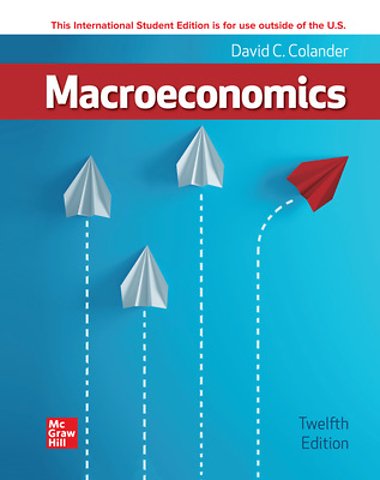PART I: INTRODUCTION: THINKING LIKE AN ECONOMIST<br>Chapter 1: Economics and Economic Reasoning<br>Chapter 2: The Production Possibility Model, Trade, and Globalization <br> Appendix: Graphish: The Language of Graphs<br>Chapter 3: Economic Institutions Appendix: The History of Economic Systems<br>Chapter 4: Supply and Demand<br>Chapter 5: Using Supply and Demand <br> Appendix: Algebraic Representation of Supply, Demand, and Equilibrium<br><br>PART II: MACROECONOMICS<br><br>MACROECONOMIC BASICS<br>Chapter 6: Economic Growth, Business Cycles, and Unemployment<br>Chapter 7: Measuring and Describing the Aggregate Economy<br><br>POLICY MODELS<br>Chapter 8: The Keynesian Short-Run Policy Model: Demand-Side Policies<br>Chapter 8W: The Multiplier Model<br>Chapter 9: The Classical Long-Run Policy Model: Growth and Supply-Side Policies<br><br>FINANCE, MONEY, AND THE ECONOMY<br>Chapter 10: The Financial Sector and the Economy<br> Appendix: A Closer Look at Financial Assets and Liabilities<br>Chapter 11: Conventional Monetary Policy<br>Chapter 12: Financial Crises, Regulation, and the Crypto Challenge<br><br>TAXES, BUDGETS, AND FISCAL POLICY<br>Chapter 13: Deficits and Debt: The Austerity Debate<br>Chapter 14: The Fiscal Policy Dilemma<br><br>MACROECONOMIC PROBLEMS<br>Chapter 15: Jobs and Unemployment<br>Chapter 16: Inflation, Deflation, and Macro Policy<br><br>INTERNATIONAL ECONOMIC POLICY ISSUES<br>Chapter 17: Comparative Advantage, Exchange Rates, and Globalization<br>Chapter 18: International Trade Policy <br><br>INTERNATIONAL MACROECONOMIC POLICY ISSUES<br>Chapter 19: International Financial Policy<br> Appendix: History of Exchange Rate Systems<br>Chapter 20: Macro Policy in a Global Setting<br>Chapter 21: Structural Stagnation, Globalization and the Post-COVID Blues<br>Chapter 22: Macro Policy in Developing Countries<br><br><br>

